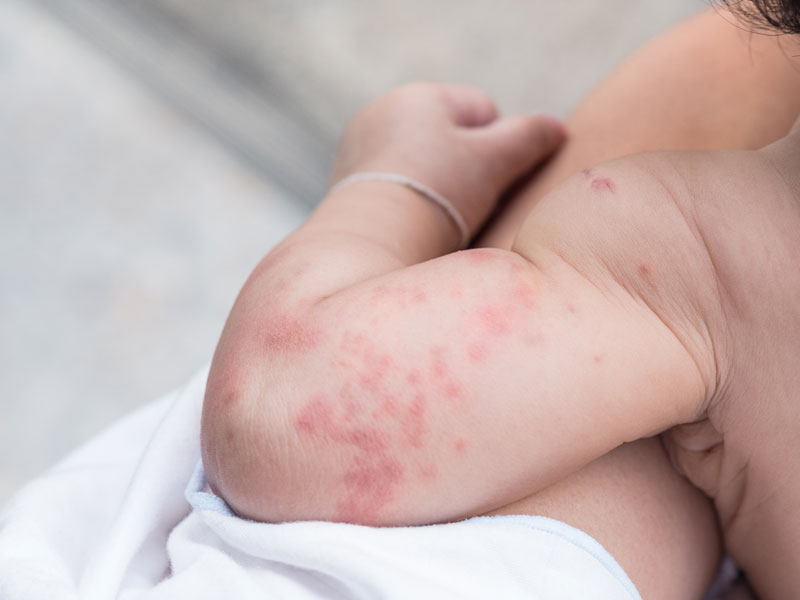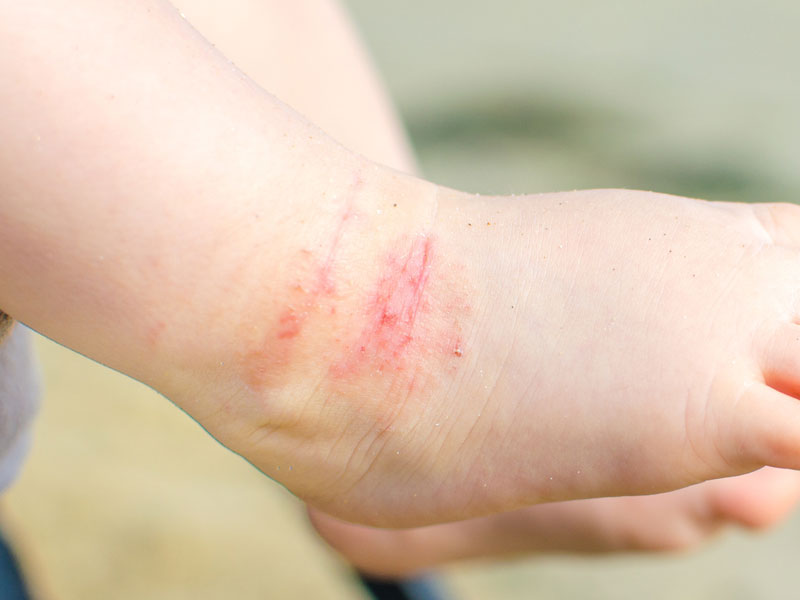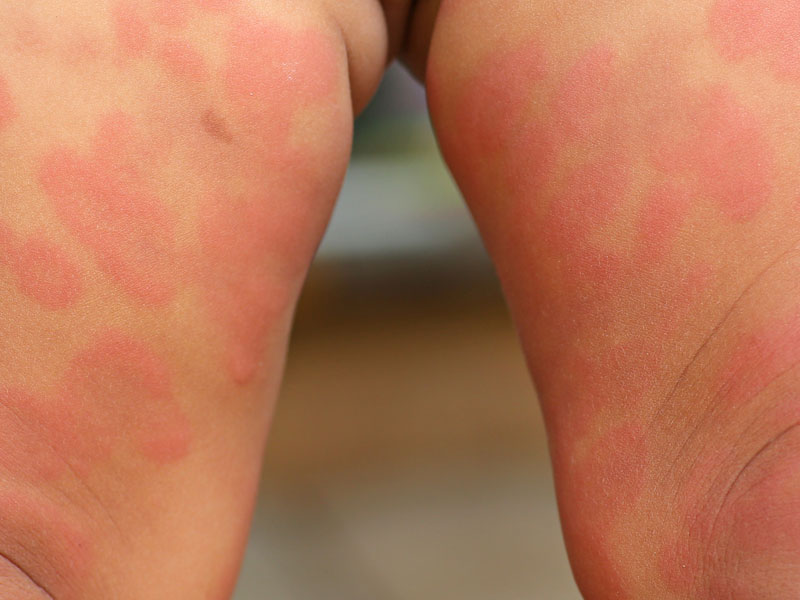HEALTH GUIDE: Dermatitis
What is dermatitis?
The term dermatitis is generally used to refer to pathological skin changes. These can be acute, intermittent or chronic.
Skin irritations, such as rashes in the form of pustules, redness, blisters or scales, that are sometimes accompanied by itching or inflammatory skin reactions (eczema) occur as autonomous diseases or as a result of pathological processes, as with chickenpox for example.
The irritations and diseases may be contractable. There are harmless forms without health implications as well as more serious diseases.
Some skin barrier disorders occur very frequently in infancy and early childhood. These include neurodermatitis, nappy rash, facial dermatitis and thrush.
With infant and adolescent diseases, a doctor should always be consulted to clarify what helps against dermatitis.
Causes of the disease
The causes and triggers of dermatitis are manifold.
As is the case with many skin diseases, the origins are not fully understood. In most cases immune system disorders are suspected.
On the one hand, there are genetic predispositions that facilitate skin conditions. Frequently allergic reactions, food intolerance, hay fever and asthma accompany the disease. And dermatitis in babies is not uncommon.
Alternatively external factors such as toxins, pollen, animal hair, wool, sensitivity to light, reactions to excessive care, bacterial diseases, hormonal disorders or changes as well as stress can cause dermatitis and trigger it in children.
One of the most common forms of dermatitis is nappy rash in babies. This can be caused by use of inappropriate or non-breathable nappies, insufficient nappy changing, incorrect care products, wrong nutrition or diarrhoea. Warmth and dampness in the nappy area promote the growth of germs which in turn trigger dermatitis symptoms.
Diagnosing dermatitis, symptoms and development
The appearance, severity and proliferation of dermatitis are determined by the respective disease.
If untreated, dermatitis can last up to several months. And with facial dermatitis in particular, this can also have psychological consequences.
Dermatitic symptoms are primarily recognizable as changes in the skin. Redness may appear initially followed by the occurrence of spots, papules, blisters, wheals, fissures or flaky skin for a limited period of time on a chronic or episodic basis. Itching, tightening of the skin, burning rashes and general discomfort may also develop. Mechanical irritation, hormonal fluctuations and stress can aggravate the symptoms. When dermatitis affects children, a paediatric diagnosis is important as the causes and treatment of dermatitis can then be reliably coordinated.What helps against dermatitis?
If dermatitis is diagnosed, it is advisable to treat the disease with a suitable therapy. When the first signs appear, it is sensible to seek relief quickly.
A paediatrician is likely to ask about the diet of the affected child or its breastfeeding mother.
Acidic and spicy foods should be avoided.
Textiles should also be checked as a healthy skin favours breathable cotton-silk blends. Synthetic materials and plastic nappies should not be used.
The paediatrician is likely to prescribe a suitable cream with prominent lipid-replenishing agents for flaky and dry skin as well as medicinal supplements for part or fully filled baths. The medicinally active ingredient ectoin has become popular, especially in creams for children and babies as it promises swift symptom relief.
Prevention is better than cure
Long-term breastfeeding offers good protection against skin diseases. Mothers however should pay attention to their diet which should be as varied and rich in vitamins as possible.
back

